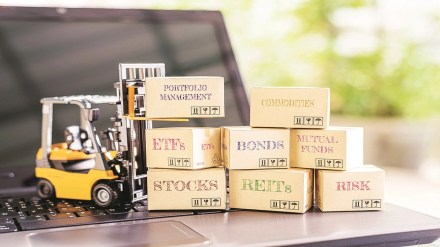Which search engine do you use to browse the internet? Which OTT platform do you use to watch movies and web series? Which company do you prefer when buying electronic gadgets? The answers to these queries are most likely Google, Netflix, YouTube, Apple, and so on.
The majority of the Indian population uses global brands, but how many actually invest in them? These companies have huge cash balances and market capitalizations, making them good investment options with the potential for good returns. Therefore, overseas investments can step in to balance out the returns when any circumstance impacts the Indian investment portfolio.
Indian investors started changing their portfolio allocation from real assets to financial assets in the last decade. This is evident from the growth in SIP inflows and the number of demat account openings in the past decades. However, Indian investors continue to favour investing in the Indian market since it offers a high growth rate. But what if a crisis hits the economy?
For instance, the 2008 GFC brought recession to almost all the economies of the world, including India. The Indian market fell by 55% and the US market by 50% as compared to pre-crisis levels. But if we look at the rebound rate during the post crisis period between 2008-2013, the Indian markets gained 4.3% while the US market gained almost 50%, reaching its pre crisis level.
A similar pattern can be observed during the COVID-19 pandemic. Therefore , it is evident from the historical data that they are safer with a high rebound rate in the international markets, even though they are unstable due to market conditions.
The majority of Indian investors diversify their portfolio across different sectors in the domestic market rather than diversifying it across international markets. During a recession in the domestic market, no matter how well diversified your portfolio is – sector wise or market capitalization-wise, it will be affected. Considering high returns and risk management practises, diversifying portfolios across international markets is an essential component in today’s increasingly interconnected world.
However, due to the complexities involved in investing overseas, the decision to diversify abroad should be made considering both sides of the coin.
Also Read : Best international mutual funds to invest in 2023
The major risk associated with investing abroad is due to currency rate volatility and the double taxation system. Due to the exchange rate fluctuations, the investor is exposed to two risks simultaneously, i.e., the risk of the stock and the risk of the exchange rate. However, one should remember that the stock market is volatile by nature, and it’s important to look at long term fundamentals rather than short term changes.
Under the double taxation laws, the profits from the investment are taxed twice, ,i.e., when the shares are sold in the foreign country and again in the host country of the investor. This prevents investors from making overseas investments. However, India has a Double Tax Avoidance Agreement (DTAA) with many countries, including the US,UK, France, Russia, etc., thus providing relief to investors.
Therefore, while the Indian market remains a good investment option, diversification of the portfolio by investing abroad provides access to newer opportunities, the potential for higher risk-adjusted returns, and a hedge against inflation.
However, due to the complexities and risks involved in investing abroad, the investor should invest with due diligence, considering the tax structure, market regulations, and fundamentals of the company, along with timely entry and exit.
